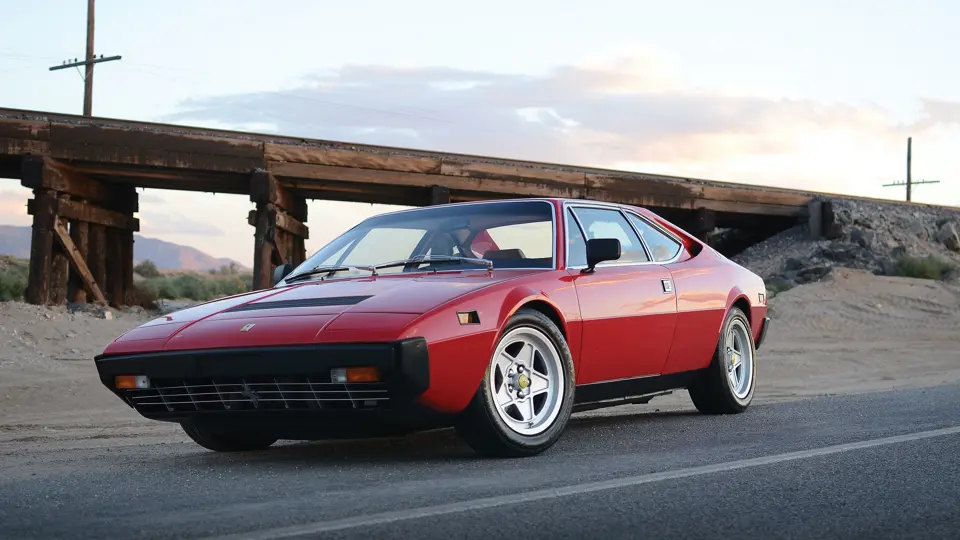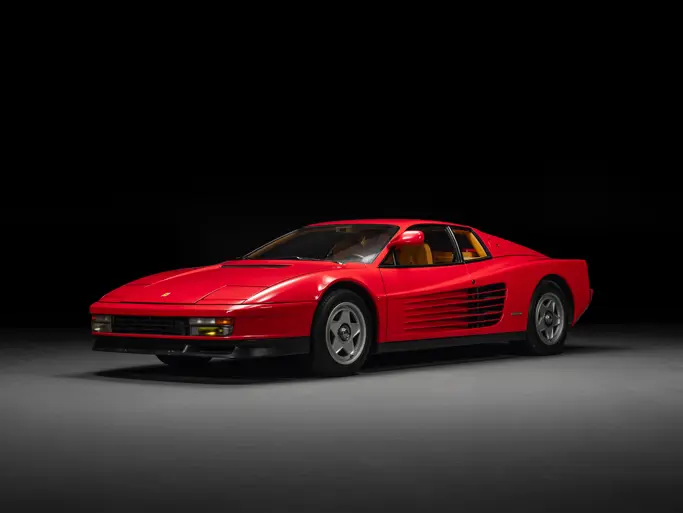Even though Enzo Ferrari had personally told respected racecar driver, Le Mans 24 Hour winner-turned-journalist Paul Frère, that “a Ferrari is a 12-cylinder car” – the car officially known as a Dino because of having an eight-cylinder powerplant was by all standards, including performance, a Ferrari through-and-through. Frère should know as he and fellow Belgian, Olivier Gendebien, won the 1960 Le Mans 24 Hours in a factory-entered Ferrari 250 TR. Frère would go on to become the European Editor of Road & Track magazine and had many opportunities to test and evaluate the latest Ferrari offerings based on occupation and his outstanding reputation.
In writing about the Dino 308 GT4 he forwarded that “In fact, it is a lot quicker than the short-lived 365 GTC/4 and it has no trouble keeping up with any other fully road-equipped exotic supercar I have tried except a Daytona (Ferrari 365 GTB/4), the fastest Corvette and lightweight Carrera (Porsche), which the Dino matches in speed but not in acceleration. But then the lightweight Carrera cannot be fairly compared with the luxuriously equipped Dino.”
In many ways the Dino 308 GT4 departed from the Ferrari traditions of the period; the most obvious novelties being the use of an eight-cylinder engine for the first time in a production Ferrari and that Bertone had been entrusted with the design of the body rather than Pininfarina. It was also one of the rare central-engine cars featuring rear occasional seats. Though there is room for two small children, or one cross-seated adult, it required a great deal of optimism to refer to the car as a 2+2. This was, however, a good answer to justified criticisms that mid-engine cars had an infuriating lack of usable space.
The general layout of the eight-cylinder Ferrari was very similar to its six-cylinder 246 GT Dino stablemate, with a vee configuration mounted transversely and midship. The body shape provides a good driving position and keeps the car firmly planted at speed and produces very little wind-generated cabin noise. The amazingly flexible and docile engine is connected to an extremely precise gated-shift five-speed manual transmission. The running gear translated into what many consider to be the finest attribute of this model in that it presented not even the slightest problem in driving the Dino in heavy town traffic and was exceedingly easy when traversing the high-speed motorways.
The 1979 Ferrari Dino 308 GT4 being offered is a United States sunroof version that is finished in Rosso Corsa with tan leather seats with dark tan rugs. It has a well-documented history and has been sparingly used over the years. The current owner purchased the Ferrari from its prior possessor, who had the car for 27 years. The Dino had its original paint (with limited checking, but no rust or accident history), a stalk-type Blaupunkt stereo that is in good working order and power-assisted four-wheel disc brakes. The car was in “stock” configuration, other than the factory 16-inch wheels that were listed as a factory option. It is notable that it also has the original books and tools accompanying it in the sale.
After the current owner acquired the Ferrari, his mechanic at Carobu Engineering noted a tapping sound while adjusting the carburetors. This turned out to be a broken number eight exhaust valve. It caused only minimal impairment, but after considering the options, it was decided to execute a full, no-expense-spared rebuild to 3.5-liter specifications with Euro cams, X-Ost exhaust system, plus many other details which yielded an even greater running, very torquey engine that helps deliver 280-plus horsepower on an engine dynamometer at 7,000-feet in elevation. They also elected to remove the emissions equipment, which has been retained and will come with the car.
After this process was decided upon, the owner then elected to go through the entire chassis. It has experienced a gorgeous and full bare metal take-apart repaint in the original tone of Rosso Corsa, re-trimming of the interior, upgraded brakes, larger rear sway bar, new springs and Koni coilover height-adjustable shocks. All suspension work and alignment was also coordinated by Carobu Engineering to extract optimal results. In all, the Ferrari has received over $60,000 investment in its rework, but the results have yielded what the owner considers to be “the best running and driving Ferrari I’ve ever known.” To further advance how nice this Ferrari is, it was featured in the February 2014 (#131) issue of Forza magazine in an article titled “Dark Horse.”



 | Fort Lauderdale, Florida
| Fort Lauderdale, Florida


